American battleships like "Iowa"
Many experts call Iowa type battleships the most sophisticated ships that were built in the era of armor and artillery. American designers and engineers managed to achieve a harmonious combination of the main combat characteristics - speed, protection and weapons.
The design of these liners began in the 1938 year. Their main purpose is to accompany high-speed aircraft carrier formations and protect them from the Japanese liners and heavy cruisers. Therefore, the main condition was the 30-node motion. At this time, the restrictions of the London Maritime Conference 1936 of the year ended due to Japan’s refusal to sign the final document. In the process, the standard displacement increased from 35 to 45 thousand tons, and the artillery received caliber 406 mm instead of 356 mm. This made it possible to develop a ship, the protection and armament of which was superior to those existing on already built ships of this type, using the increase in displacement to install more powerful machines. In the new project, almost 70 meters were added to the length of the hull, the width remained unchanged, it was limited by the width of the Panama Canal. The hull was also lightened due to the new location of the power plant, which made it possible to narrow the stern and fore part of the ship. In particular, because of this, the American battleships acquired the characteristic "baton" look.
The increased hull length affected the weight of armor, although, in fact, the thickness of its elements remained the same as on South Dakota-style ships - the main armored belt of 310 mm.
Iowa-class ships received new 406-mm guns, the barrel length of which was the same as on the trunks of 50-caliber. The new guns Mk-7 were superior in power to their predecessors - the 406-mm 45-caliber Mk-6, which equipped the ships of the “South Dakota” type. And compared with the 1918-mm Mk-406 and Mk-2 tools developed in 3-year, the new Mk-7 has significantly reduced weight, and the design has been modernized.
It is worth noting that this artillery system is quite interesting. story. In the 20-s, a large number of 406-mm / 50 guns were produced, which equipped the battlecruisers and battleships, which later became victims of the Washington Conference. The use of these tools in the new project significantly reduced financial costs, and also justified the increase in displacement by installing new, more powerful weapons. But as a result, it turned out that it would be necessary to increase the displacement even by at least 2000 tons. Engineers have found a way out - they have made anew lighter tools, the benefit of the design gap was enough. In Mk-7 type guns, the barrel is sealed with a liner that reached the diameter of 1245 mm in the area of the charging chamber, 597 mm at the barrel. The number of grooves was equal to 96, they reached a depth of 3.8 mm with a cutting slope of one revolution for every 25 gauge. Chrome plating of the bore at a distance of 17.526 meters from the muzzle with a thickness of 0.013 mm was also used. Barrel survivability was about 300 shots. At the same time, the piston valve at the swinging trunk was folded down. Structurally, he had 15 stepped sectors, and the angle of rotation reached 24 degrees. After the shot, the bore was purged with low pressure air.
The weight of the gun reached 108 tons without an installed shutter and 121 tons with it. When firing, a powder charge was used with a weight of almost 300 kilograms, which could have thrown an armor-piercing 1225-kilogram shell on 38 kilometers. In addition, the gun could fire high-explosive shells. As part of the project, the Iowa ammunition was supposed to include the 1016-kilogram Mk-5 armor-piercing shells, but in the middle of 1939, the US Navy received a new MK-8 projectile, which reached 1225 kilograms. This is the heaviest projectile of this caliber, which became the basis of the firepower of all American battleships, starting with the "North Carolina". As a comparison, the 406 mm projectile used on the English battleship Nelson weighed only 929 kg, and the Japanese Nagato 410-mm projectile 1020 kg. Approximately 1.5% of the weight of the Mk-8 projectile was the explosive charge. When hitting armor with a thickness of more than 37 mm, the bottom fuse Mk-21 was cocked, which worked with a deceleration of 0.033 seconds. With a full powder charge, the initial speed in 762 m / s was provided, while decreasing it, this indicator decreased to 701 m / s, which ensured ballistics similar to that of the projectile 45-caliber guns Mk-6.
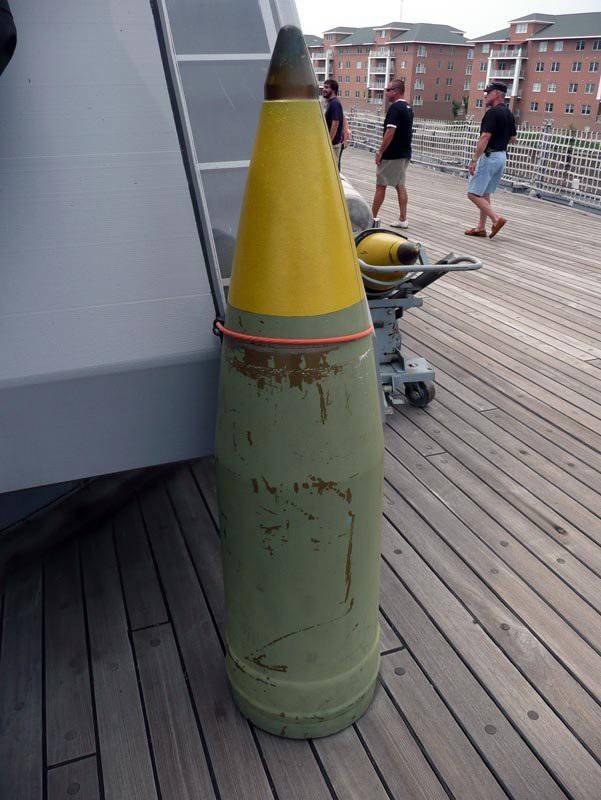
True, this power had a reverse side - strong barrel wear. Therefore, when the battleships needed to fire on the shore, a lighter projectile was developed. The high-explosive Mk-13, put into service in 1942, weight reached only 862 kilogram. It was equipped with several different fuses: Mk-29 - instant-impact shock, Mk-48 – shock with deceleration in 0.15 seconds, as well as remote tube Mk-62 with time setting to 45 seconds. 8.1% of the weight of the projectile occupied by an explosive. Toward the end of the war, when the main gauge of the battleships were used only for firing on the coast, the Mk-13 projectiles received charges reduced to 147.4, which provided the initial velocity at 580 m / s.
In the postwar years, ammunition of Iowa-type battleships was replenished with several new samples of 406-mm projectiles. In particular, the Mk-13, Mk-143, 144, 145 and 145 were developed on the basis of the Mk-144. They all used electronic remote tube of various types. In addition, the Mk-146 and 400 had 666 and XNUMX gaps, respectively.
At the beginning of the 1950-ies, the Mk-7 guns received a Mk-23 projectile, which was equipped with a W-23 nuclear charge - 1 CT in TNT equivalent. The weight of the projectile was 862 kilogram, length - 1.63 meter, and the appearance is almost completely copied Mk-13. According to official data, the nuclear artillery shells were in service with the Iowa battleships from 1956 to 1961 a year, but in fact they were kept ashore all the time.
And already in the 1980-e years, the Americans tried to develop a high-range sabot projectile for 406-mm guns. Its weight should have been 454 kilograms, and the initial speed - 1098 m / s with a maximum range of 64 kilometers. True, this development has not left the experimental testing stage.
The rate of guns was two shots per minute, while providing independent fire of each gun in the tower. Of contemporaries, only the Japanese superlinker "Yamato" had a heavier weight volley of the main caliber. The total weight of the three-gun turret was approximately 3 thousand tons. Shooting provided the calculation of the 94 man of personnel.
The tower made it possible for 300 degrees to be shifted horizontally and + 45 and -5 degrees vertically. 406-mm shells were stored vertically in a fixed circular store in two tiers, which was located inside the barbet of the tower. Between the rotary structure of the tower installation and the store were two ring platforms that rotate independently of it. They were given shells, which were then moved to the ski lifts, regardless of the angle of horizontal guidance of the tower. In total there were three lifts, the central one was a vertical pipe, and the extreme ones were curved. The work of each provided 75-strong electric motor.
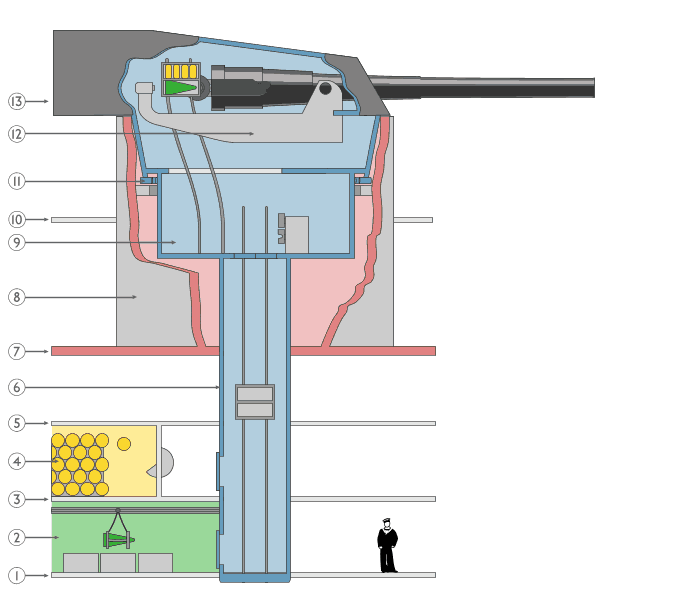
For storage of charges used two-tier cellars in the lower compartments, which are adjacent to the annular structure of the tower. They were served in gazebos of six units using three charging chain lifts, which were driven by an electric motor with a capacity of 100 hp. Like its predecessors, the design of the Iowa towers did not contain an overload compartment, which cut off the charge chain from the cellar. Americans hoped for a complex system of hermetic doors, which should not have let the fire go through the lifts. However, this decision does not seem indisputable - American battleships risked to fly up into the air more likely than most of their contemporaries.
The standard 406-mm turret at number one was 390 shells, the number two turret was 460, and the number 3 turret was 370. When firing, a special analog computing device was used, which took into account the direction of movement of the battleship and its speed, as well as weather conditions and projectile flight time.
Accuracy increased significantly after the introduction of radar, which gave an advantage over Japanese ships without radar installations.
As on the predecessors, ten 127-mm paired universal units were used as heavy anti-aircraft weapons.
The range in height when shooting at planes reached 11 kilometers at the stated rate of fire in 15 shots per minute. The small-caliber artillery consisted of four-barreled 40-mm Bofors automatic rifles, as well as twin and single-barreled 20-mm air-guns. For fire control "boforsov" used the director-column Mk-51. The Oerlikon was initially guided individually, but in the 1945, the Mk-14 sighting columns were introduced, which automatically gave out data for firing.
The displacement of the Iowa class battleships was 57450-57600 tons, the power of the 212000 power unit, hp. Cruising range - 15000 nautical miles at a speed of 33 knot. The crew of this type of ships was 2753-2978 people.
At the time of construction, the ships were equipped with the following weapons - 9 mm 406 guns, which were located in three towers, 20 mm guns in ten turrets, as well as mm 127 and 40 mm automatic anti-aircraft guns.
In June, 1938, the project was approved building ships like "Iowa". Total planned to build six ships. In 1939, they issued orders for the construction of Iowa and New Jersey.
Note that the construction of battleships was carried out at an unprecedented pace. Electric welding was used, which is not typical for that time. The first pair of ships entered service in 1943 year. Place flagship took the battleship "Iowa". He was distinguished by increased wheelhouse.
The second pair of Missouri and Wisconsin was built for the 1944 year. Initially, the corps of the third pair - "Kentucky" and "Illinois" - were laid as "Ohio" and "Montana" - the first and second battleship of the type "Montana". But in the 1940, the Emergency Military Shipbuilding Program was adopted, so they were used to build the Iowa battleships. But these ships were waiting for a sad fate - the construction was frozen after the war, and in 1950-s they were sold on metal.
Iowa type ships entered the combat duty on 27 August 1943. They were sent to the area of the island of Newfoundland to repel a likely attack from the German battleship Tirpitz, which, according to intelligence, was in Norwegian waters.
At the end of 1943, the battleship delivered President Franklin Roosevelt to Casablanca at the Tehran Allied Conference. After the conference, the president was taken to the USA on it.
2 January 1944 of the Year Iowa visited the Pacific Ocean as the flagship of the 7 Linear Division, receiving a baptism of fire during operations in the Marshall Islands. From January 29 to February 3, the ship provided support for aircraft carrier strikes at the Enolvetok and Kwajalein atolls, and then strikes at the Japanese base on Truk Island. Until December 1944, the battleship was actively involved in hostilities in the Pacific. With it, three enemy aircraft were shot down.
January 15, 1945 "Iowa" arrived at the port of San Francisco for overhaul. On March 19, 1945 she was sent to Okinawa, where she arrived on April 15. On April 24, 1945, the ship provided support to aircraft carriers that covered the landing of American troops in Okinawa. From May 25 to June 13, Iowa bombarded the southern areas of Kyushu. July 14-15, the ship took part in attacks on the Japanese metropolis on the island of Hokkaido - Muroran. July 17-18 in attacks on the city of Hitaki on the island of Honshu. Until the cessation of hostilities on August 15, 1945, the ship supported the actions of formations aviation.
29 August 1945 of the Year The Iowa entered the territory of Tokyo Bay as part of the occupying forces, as Admiral Halsey's flagship. And on September 2 participated in the signing of the surrender by the Japanese authorities.
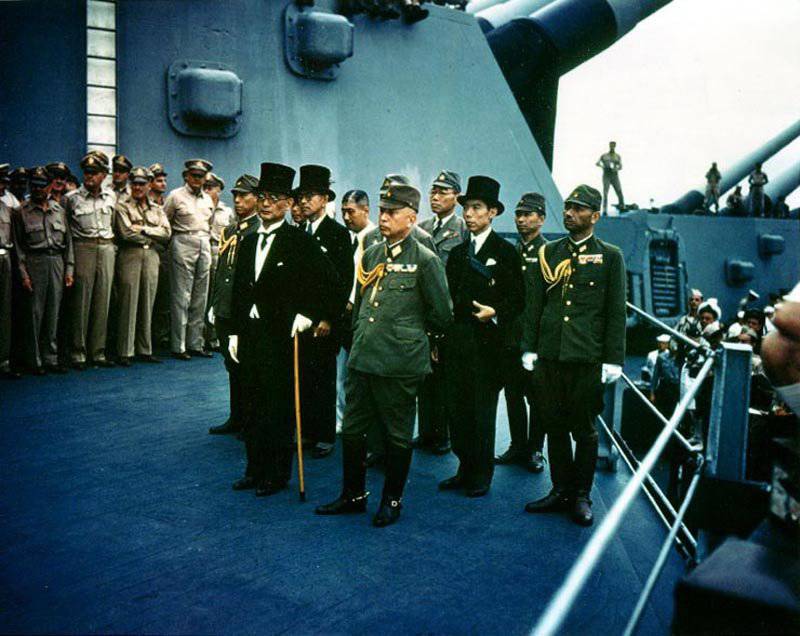
The second battleship of the series - “New Jersey” sailed to Funafuti on Ellis Island on January 23, 1944 to strengthen the air defense of the ships of the Pacific fleet. Already on February 17, the battleship had to engage in naval combat with destroyers and light cruisers of the Japanese fleet. The ship also took part in operations off the coast of the islands of Okinawa and Guam, and provided cover during the raid to the Marshall Islands. Anti-aircraft gunners of the ship managed to bring down four Japanese torpedo bombers.
After Japan’s capitulation was signed, New Jersey was based in Tokyo Bay, taking the place of the flagship of the American squadron until January 18, 1946.
The battleship Missouri provided support to the American marines in the bloody battles for the islands of Okinawa and Iwo Jima. There, he was attacked several times by kamikaze aircraft, which could not cause serious damage to the ship. True, the dent from one of them can be seen now. Total battleship battleship shot down six Japanese aircraft. The ship also took part in the shelling of the islands of Hokkaido and Honshu.
After the end of the Second World War 2 September 1945, the commander-in-chief of the Allied forces, General Douglas McCart, accepted the unconditional Japanese surrender. The official ceremony took place in the Tokyo Bay on board the battleship Missouri.
Battleship "Wisconsin" got escort aircraft carrier connections in the Pacific Ocean. During this time, he shot down three enemy aircraft, supported the landing of paratroopers on Okinawa with fire. During the final stage of the war shelling the coast of the island of Honshu.
18 December 1944, the battleship took part in the fighting of the 3 fleet in the Philippine Sea approximately 480 kilometers from Luzon Island, where it hit the center of a powerful typhoon. Before the onset of inclement weather, bunkering of ships at sea was carried out. The strongest storm sank three American destroyers. Killed 790 sailors, still 80 injured. On three aircraft carriers 146 aircraft were completely or partially destroyed. Moreover, the battleship commander reported on only two sailors who were slightly injured.
It is worth noting that during the Second World War, the battleships for the most part could not meet the expectations that were placed on them. There was not a single general battle for supremacy on the sea between battleships, and artillery duels were very rare. In addition, it turned out that the battleships are very vulnerable to attacks by submarines and aircraft. After the end of hostilities, all countries ceased to produce warships of this class, so the unfinished battleships went on metal.
Many experts note that the era of guided missiles and atomic bombs has now begun, so the battleships are outdated, like warships. And indeed, after the American tests on the Bikini Atoll and the Soviet in Novaya Zemlya, it turned out that after an explosion equivalent to 20 kt in an area with a radius of 300-500 meters, ships of all classes would be sunk.
Thus, now appeared effective weapon against surface ships - planes with nuclear charges, but to say that the battleships have become unnecessary, not worth it.
A bomb dropped from a height of 9-11 kilometers, deviation of about 400-500 meters. The duration of its fall with a parachute reaches three minutes. During this time, a ship traveling at a speed of 30 nodes can travel 2.5 kilometers. The battleships had every opportunity to evade a bomb. In addition, the air defense of the ship could bring down the aircraft carrier is still on the way.
The battleships that were designed for artillery duels would become a “tough nut” for anti-ship missiles, their armor reliably protects against the new “super weapons” that was created to destroy aircraft carriers.
Such ships were indispensable for strikes along the coast and support of the landing force. In the 1949 year, already in reserve, they were again returned to service. At this time, the Korean war began, in which all four battleships participated. Moreover, they did not fire at the squares, but were responsible for “pinpoint” strikes to support the ground forces. These were very effective shelling - an explosion of one 1225-kilogram projectile is comparable in power to several dozens of howitzer shells. True, the Koreans fired back. March 15 The Wisconsin 1951 was fired from a coastal battery as part of the 152-mm guns near the town of Samjin. At the level of the main deck, between 144 and 145 frames, there was a hole in the starboard. Three sailors were injured. 19 March 1953, the ship received an order to leave the combat area.
21 March 1953, the battleship New Jersey came under fire from enemy coastal artillery. 152-mm projectile hit the roof of the main artillery turret, causing minor damage. The second shell hit the stern engine room. As a result, one person died. Three more were injured. The ship went to the base in Norfolk for repairs.
After the end of the Korean War, the battleships again went into reserve, though not for long. The Vietnam War began, so the ships again became popular. In the area of hostilities went to "New Jersey". This time the ship fired on the square. According to some military experts, one ship was able to replace about fifty fighter-bombers. Only, neither anti-aircraft batteries, nor bad weather could prevent it - support was provided in any conditions.
During the Vietnam War, the battleships also showed their best. At the same time, sixteen-inch shells did not hit the pocket of American taxpayers, since during the Second World War there were a lot of them.
From 1981 to 1988 of the year, all four ships underwent a deep modernization. In particular, they were equipped with eight launchers of BGM-109 Tomahawk cruise missiles - four missiles in each installation, as well as four AGM-84 Harpoon four-rocket launchers, Phalanx anti-aircraft artillery systems, new communication systems and radar.
28 December 1982 held a solemn ceremony to commission the first representative of the missile battleships - "New Jersey", which was attended by US President Ronald Reagan. After the program of trials and training in the waters of the Pacific, the ship took up its "main duties" - pressure on the unfriendly US regime, demonstrating strength in various "hot" points. In July, 1983, the battleship patrolled the coast of Nicaragua, and then went to the Mediterranean. December 14 "New Jersey" used the main caliber guns for fire on the positions of Syrian air defense in the territory of southern Lebanon. Total 11 high-explosive shells were fired. 8 February 1984 was fired on Syrian positions in the Bekaa Valley. The guns of the battleship fired 300 shells. With this act of retaliation, the US military took revenge for the downed French, Israeli and American aircraft. The guns destroyed the command post, which housed several senior officers and a Syrian army general.
In February 1991, the Iowa type battleships took part in the war against Iraq. On the territory of the Persian Gulf were based two battleships - "Wisconsin" and "Missouri." At the first stage of the war, missiles were used, for example, Missouri fired Tomahawk cruise missiles at the enemy's 28.
And in February, 406-mm guns were connected to the shelling. Iraq concentrated a large number of military equipment on the coast of occupied Kuwait - it was a tempting target for heavy guns of battleships. February 4 Missouri opened fire from a combat position near the Kuwaiti-Saudi border. For three days, the guns of the ship fired an 1123 shot. During Operation Missouri also helped coalition forces clear the Persian Gulf from Iraqi naval mines. By this time, the war was over.
6 February was replaced by the Wisconsin, which was able to crush the enemy artillery battery from a distance of 19 miles. Then there were strikes on weapons depots and fuel depots. February 8 was destroyed by a battery near Ras al-Haji.
On February 21, both battleships set off for a new position to bombard the areas of Al-Shuayba and El-Kulaya, as well as the island of Failaka. The ships also supported the advance of the anti-Iraq coalition forces. February 26th shelling tanks and fortifications near Kuwait International Airport.
It is worth noting that the battleships conducted their artillery shelling from a distance of 18-23 miles, as mines and shallow water interfered with the approach. However, this was enough for effective fire. With point fire, approximately 28% of direct hits were observed, or at least the target received serious damage. The number of misses was approximately 30%. To correct the shooting used Drones "Pioneer", which changed helicopters.
It is worth mentioning about a funny battle episode that took place during Operation Desert Storm. During the preparation for the shelling of the Faylak Island, the battleship poisoned the drone to adjust the fire. At the same time, the operator should have led him as low as possible so that the enemy could understand what was awaiting him. Noticing the drone, Iraqi soldiers raised white flags, signaling that they were giving up.
Perhaps this is the first time that the personnel surrendered to an unmanned vehicle.
After the end of the "cold war" began the withdrawal of battleships from service. 16 April 1989, the "first bell" sounded. A powder charge exploded inside the central 16-inch gun of the second turret. The explosion killed 47 people, and the gun itself was seriously damaged. The tower was able to contain most of the blast wave, so the crew in other compartments was almost not affected. They were saved by explosive doors that separated the powder cellar from the rest of the premises. The second tower was closed and sealed, it never worked again.
In 1990, the battleship "Iowa" was withdrawn from the battle fleet. He joined the reserve fleet of national defense. The ship was laid up on the territory of the naval education and training center in Newport until 8 March 2001. And from 21 April 2001 of the year to 28 of October 2011, he was parked in Sesun Bay.
October 28 The battleship 2011 was towed to the port of Richmond in California to repair before moving to a permanent berth in the port of Los Angeles. 9 June 2012, the ship was excluded from the list of craft. Since July 7 it was turned into a museum.
Operation "New Jersey" lasted until the year 1991. Until January 1995, the ship was in Bremengton, after which it was written off and transferred to the authorities of the state of New Jersey. October 15 2001, he turned into a museum.
Missouri was written off in 1995 year. He is now in Pearl Harbor, becoming part of a memorial in memory of the 1941 tragedy of the year.
October 14 2009, the battleship was placed on dry dock at the Pearl Harbor shipyard for a three-month overhaul, which ended in January of the 2010 year. Now the museum ship is located at the quay wall.
Wisconsin's career ended in September 1991. Until March 2006, he was in reserve. 14 December 2009, the American Navy transferred the ship to the city of Norfolk. 28 March 2012, the battleship included in the National Register of Historic Places, after which it lost the status of a warship.
Sources used:
AB Shirokorad "The fleet that destroyed Khrushchev"
http://korabley.net/news/linkori_tipa_aiova_vsem_linkoram_linkori/2008-11-22-62
http://ru.wikipedia.org/wiki/Линейные_корабли_типа_«Айова»
http://lifeatwave.ru/interest/231-qq-uss-missouri--
http://lenta.ru/articles/2005/07/06/battleships/
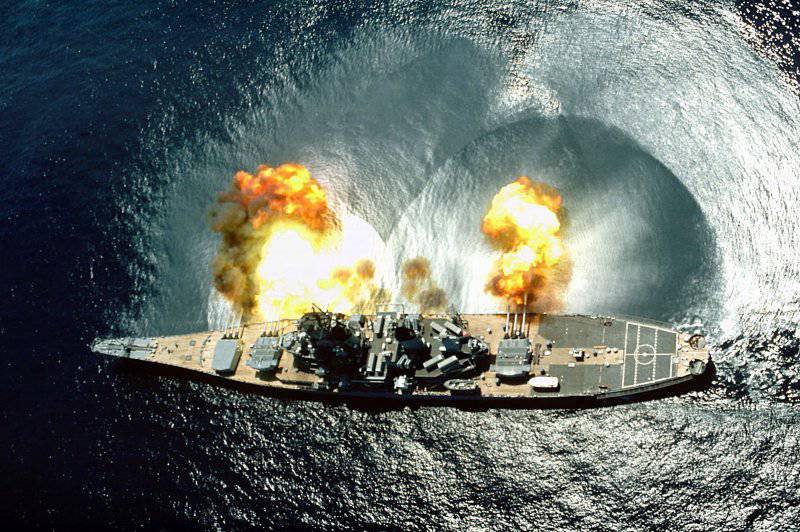
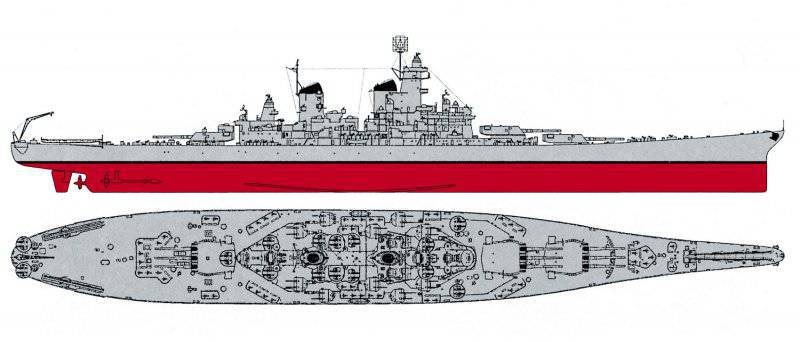
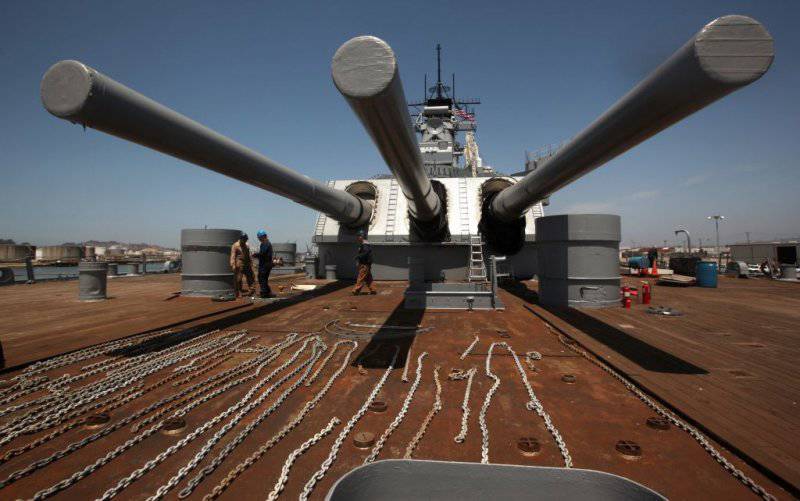
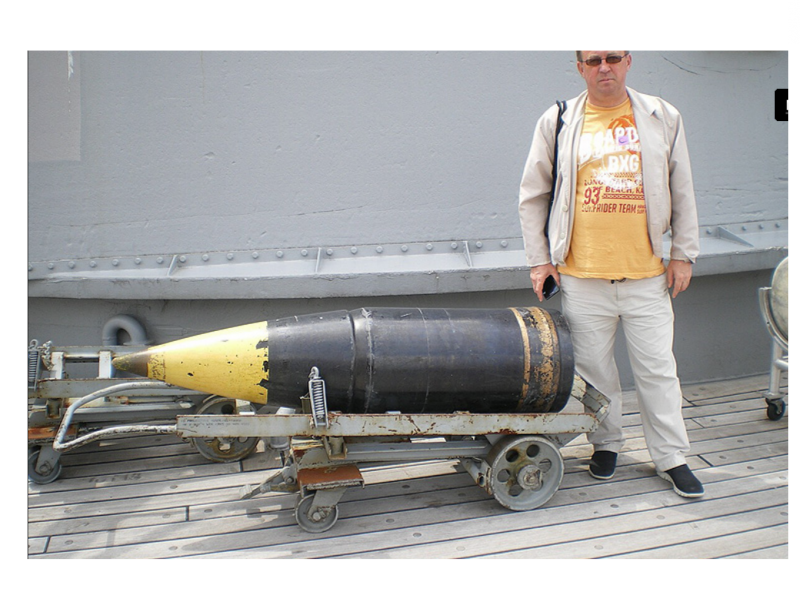
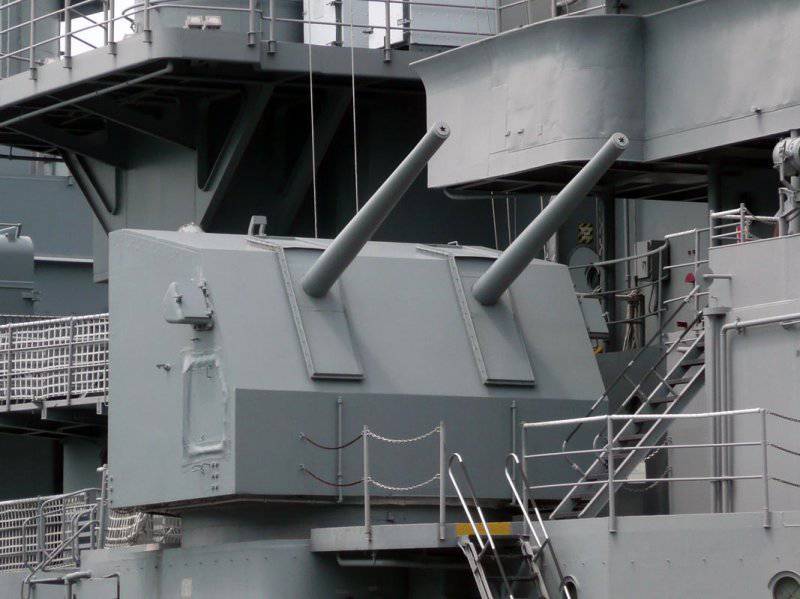
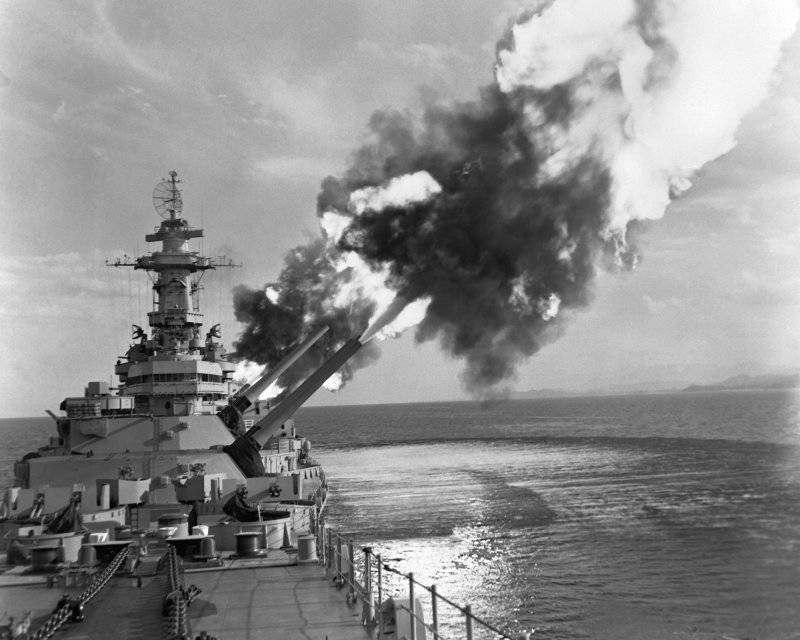
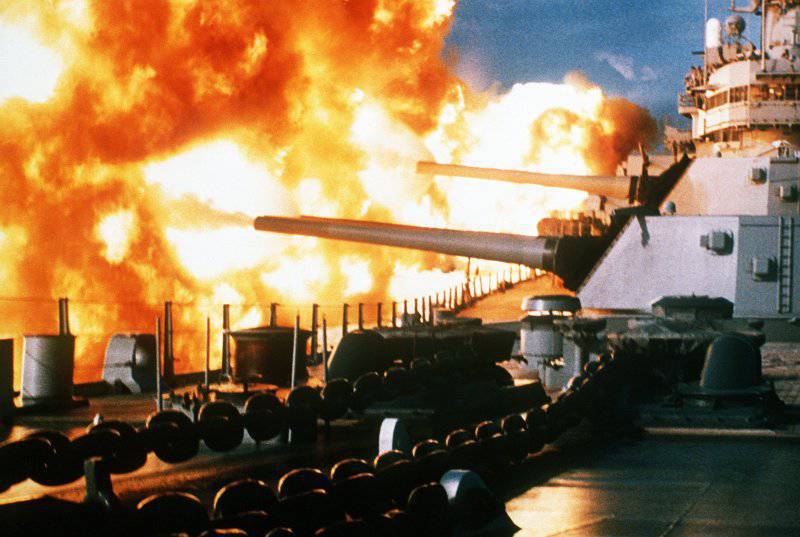
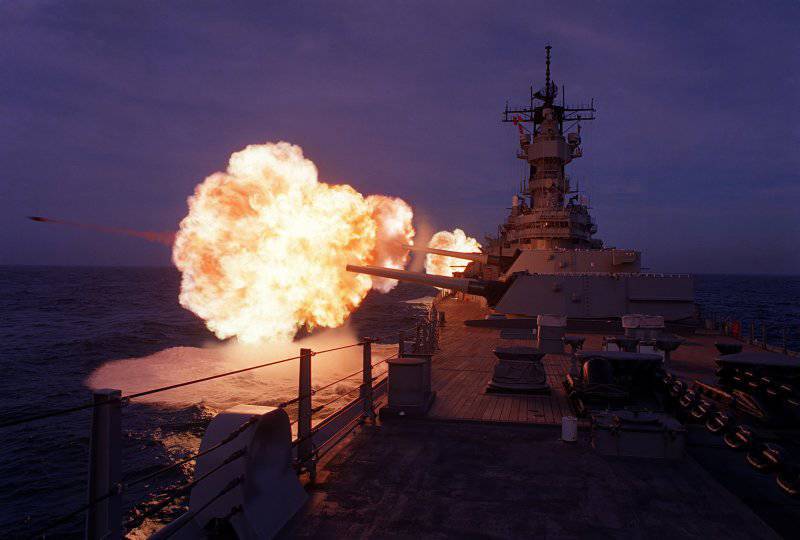
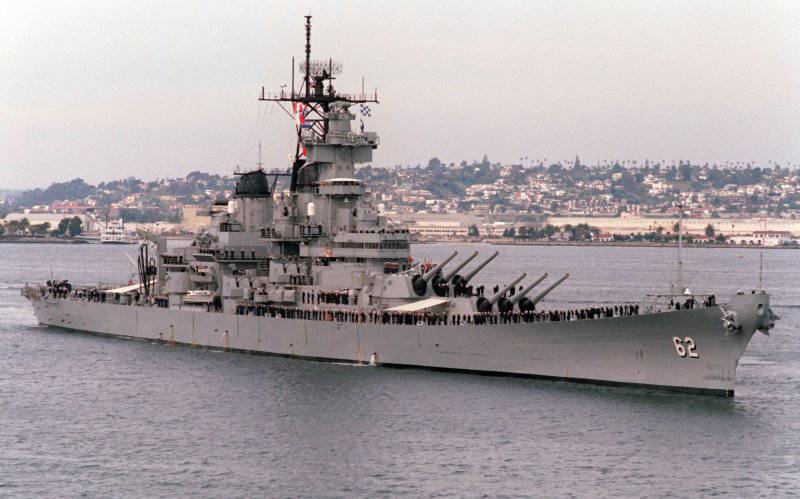
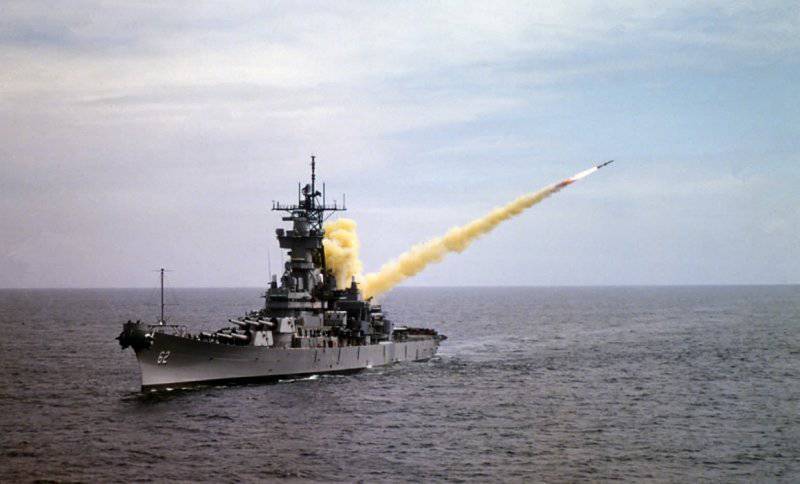
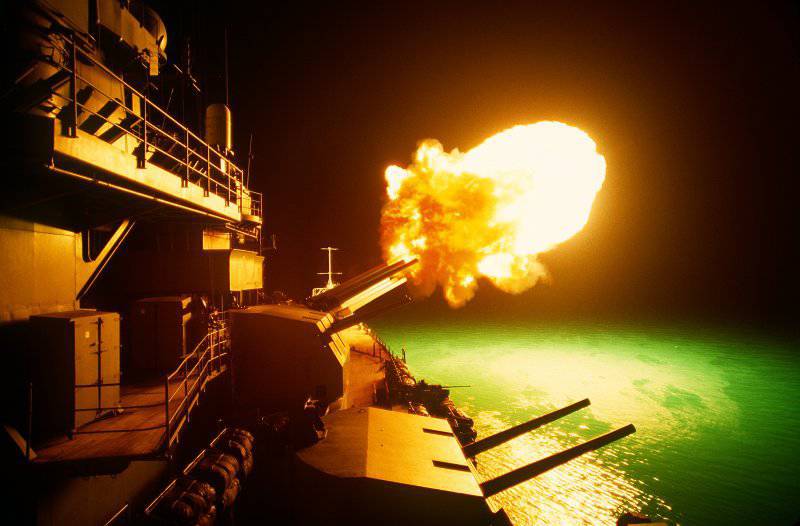
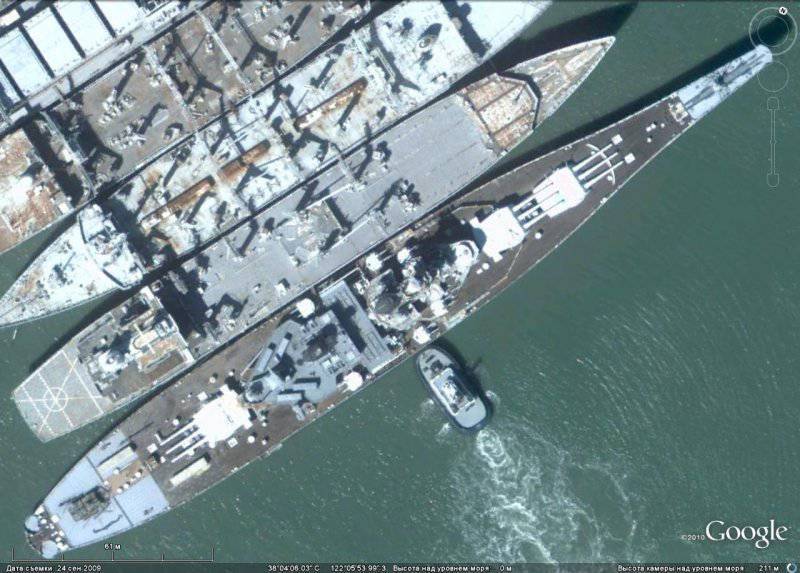
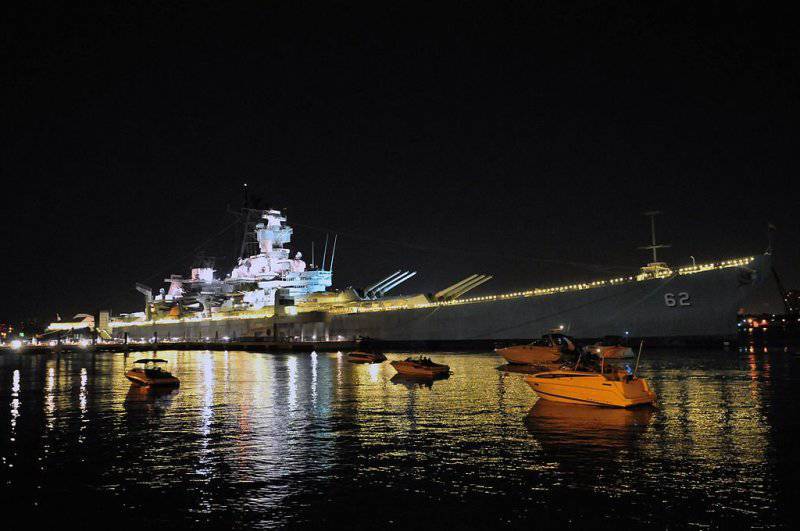
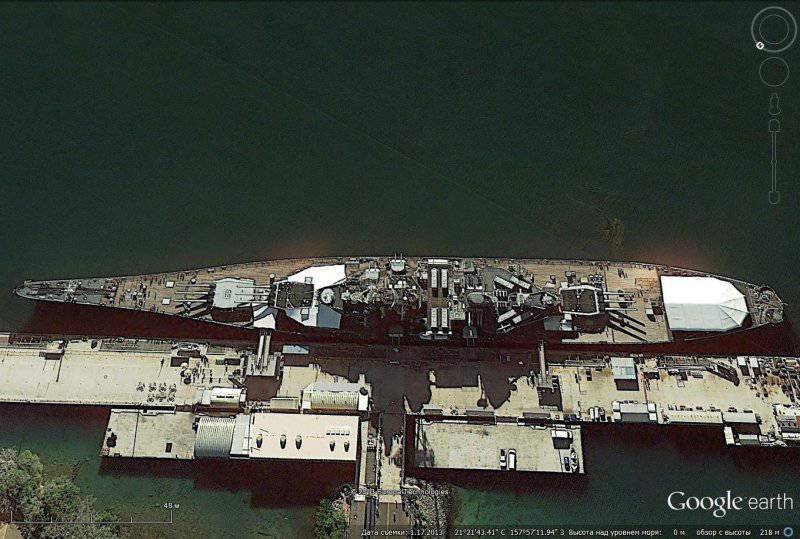
Information